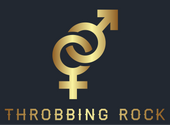Pornography has always been a mirror of human desire, from the glossy centerfolds of vintage porn magazines to today’s endless stream of online adult content. But why do we watch porn in the first place? And what does science actually say about the psychology behind it?
Researchers have spent decades studying how pornography shapes our brains, our fantasies, and even our relationships. Here’s what we know.
A Brief History: From Vintage Porn to Digital Adult Content
Before streaming platforms, millions discovered sexuality through vintage porn magazines like Playboy and Hustler. These magazines weren’t just about nudity—they offered a mix of erotic photography, sexual storytelling, and even cultural commentary.
With the arrival of VHS and DVDs, porn consumption became more visual and explicit. Today, online adult content has made porn accessible 24/7, changing both how we consume it and how it affects us psychologically.
Why Do People Watch Porn? The Psychological Drivers
Studies reveal several common psychological reasons why people consume porn:
-
Sexual Arousal
Porn triggers the brain’s reward system, releasing dopamine—the same “pleasure chemical” involved in food, love, and other rewards. -
Curiosity & Exploration
Just as readers once flipped through a porn magazine to explore new fantasies, today’s viewers use porn to experiment safely with desires they may never act on in real life. -
Stress Relief & Escapism
Many use porn as a form of relaxation or distraction, providing temporary relief from stress or boredom. -
Fantasy Validation
Porn reassures us that our sexual interests aren’t unique. Seeing a category or niche normalized in adult content can reduce shame and increase confidence.
How Porn Affects the Brain
Neuroscientific research shows that frequent porn consumption can influence brain pathways in ways similar to other rewarding activities.
-
Reinforcement of Preferences
Watching the same type of porn regularly can strengthen specific fantasies. Just as vintage porn magazines shaped desires in the past, streaming categories today reinforce modern sexual tastes. -
Tolerance & Novelty Seeking
Some studies suggest that frequent consumers may seek increasingly novel or extreme content to maintain arousal, though this isn’t universal. -
Emotional Response
For some, porn can enhance relationships by providing inspiration. For others, overuse may lead to unrealistic expectations or dissatisfaction if compared to real-life intimacy.
The Social Psychology of Porn
Porn isn’t just about the individual—it plays a role in society too.
-
Normalization of Sex
The wide availability of adult content has helped reduce stigma around discussing sex openly. -
Cultural Shifts
In the 1960s and 70s, porn magazines played a role in sexual liberation movements. Today, digital porn continues to shape conversations about gender, consent, and identity. -
Relationship Impact
Some couples watch porn together as a bonding activity, while others struggle if usage creates secrecy or conflict.
Healthy Engagement With Porn
Psychologists emphasize that porn consumption itself isn’t inherently harmful—it depends on context and balance. Tips for healthy engagement include:
-
Differentiate fantasy from reality. Remember that porn is scripted entertainment, not a sex-ed manual.
-
Communicate with partners. Using porn as inspiration can be fun, but openness is key.
-
Mix it up. Erotica, vintage magazines, and imagination are great alternatives to relying only on streaming porn.
Final Thoughts
From the discreet pages of vintage porn magazines to today’s high-speed digital platforms, pornography has always been a window into human psychology. Science tells us that people watch porn for arousal, curiosity, stress relief, and fantasy exploration.
Ultimately, porn isn’t just about sex—it’s about the ways our brains seek pleasure, meaning, and connection. As with any form of adult content, balance and awareness are key.
